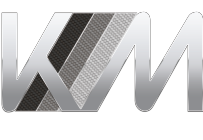At Kundi Motors we have the most upto date state of the art Diagnostic equipment, and our high-level technical training means we can make sense of baffling fault codes and advise on any necessary repair.
Snap-On Diagnostic Platform: Snap-on is a world leader in the provision of tools to the automotive industry. The platform enables us to diagnose and fault find most makes & models. The tool is upgraded every quarter to the latest software in order for us to handle every challenge that comes into our workshop.
Autologic Diagnostic Platform: Autologic is a specialist platform that provide main dealer level of diagnostics for BMW, Mercedes & VW Audi Group. Autologic is used to diagnose the more difficult of faults; updating & reprogramming of control units and access to a worldwide knowledge base of known problems & solutions.
Kundi Motors has been using computerised diagnostic equipment since the late 1990's and more routinely since the introduction of OBDII in 2001. Over the years we have gained the considerable knowledge & expertise in identifying complex electronic faults and appropriate solutions.
The introduction of OBDII has allowed the process of fault finding to be less trial & error and more systematic. The OBDII standard specifies the type of diagnostic connector and its pinout, the electrical signalling protocols available, and the messaging format. It also provides a candidate list of vehicle parameters to monitor along with how to encode the data for each. The EOBD fault codes consists of five characters: a letter, followed by four numbers. The letter refers to the system being interrogated.The first character identifies the system related to the trouble code. P=Powertrain B=Body C=Chassis U=Undefined. The next character would be a 0 if complies to the EOBD standard. The last three numbers identifies the subsystem.
P00xx – Fuel and air metering and auxiliary emission controls.
P01xx – Fuel and air metering.
P02xx – Fuel and air metering (injector circuit).
P03xx – Ignition system or misfire.
P04xx – Auxiliary emissions controls.
P05xx – Vehicle speed controls and idle control system.
P06xx – Computer output circuit.
P07xx – Transmission.
P08xx – Transmission.


